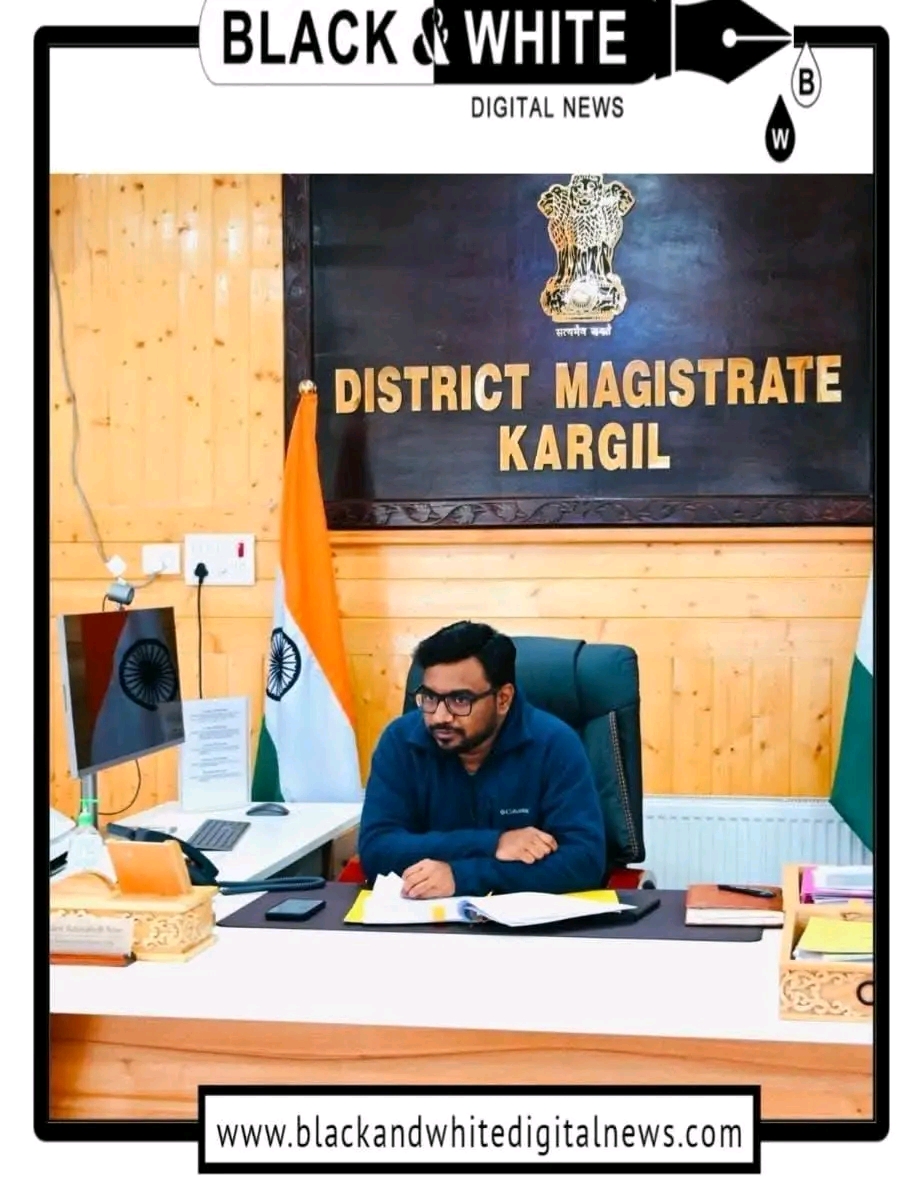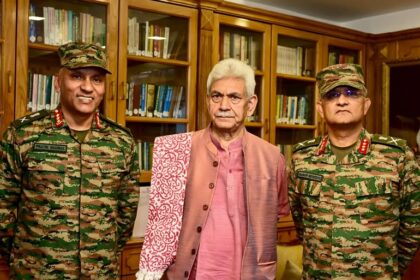Kargil’s Underground Water Revolution: Engineering Ingenuity in Extreme Climates
District Magistrate Srikant Balasaheb Suse Leads Transformative Initiative Under Jal Jeevan Mission
||Black and White Digital News ||
||Parvinder Singh March 17,2025 ||
Kargil, recognized as the second coldest inhabited place in the world, has long battled with the formidable challenge of providing reliable water during its sub-zero winters. In a groundbreaking effort under the Jal Jeevan Mission, District Magistrate Srikant Balasaheb Suse spearheaded an innovative approach that has transformed the region’s water infrastructure. By creating underground reservoirs and insulating pipelines, Suse’s leadership has ensured that even in the harshest winters, residents enjoy uninterrupted access to clean water.
Engineering Solutions to Extreme Cold
Subterranean Pipeline System:
Traditional above-ground water pipelines quickly succumbed to the extreme cold, freezing before the water could reach households. The new solution involves burying the water supply network at least five feet deep. This depth leverages the relatively stable ground temperature below the surface, ensuring that water remains liquid even when ambient temperatures plummet to -30°C. The underground system not only prevents freezing but also minimizes heat loss, a critical factor in such an unforgiving climate.
Innovative Reservoir Construction:
In a departure from standard practices seen elsewhere in India, where water tanks are positioned above ground, the reservoirs in Kargil are constructed underground. This design is specifically tailored to the local environment, safeguarding water storage from heavy snowfall and extreme winds. Natural springs provide the primary water source in many villages, while borewells supplement areas without direct access to natural water bodies.
Overcoming Logistical and Operational Challenges:
Navigating a Remote, Hostile Environment
Kargil’s geography and climate present significant challenges. With roads rendered inaccessible by snow for nearly half the year, the construction window is short—typically from April to October. During this period, ensuring timely delivery of materials and skilled labor is critical. In some instances, helicopters had to be deployed to transport equipment to the most isolated villages, underscoring the sheer logistical hurdles overcome by the project.
Mobilizing a Diverse Workforce:
Given the scarcity of local expertise in such specialized projects, Suse’s administration sourced much of the labor from states like Jharkhand and Bihar. This collaborative effort not only bridged the skills gap but also demonstrated the power of inter-regional cooperation in executing large-scale public infrastructure projects in extreme conditions.
Leadership and Recognition:
Governance That Transforms Lives
Under District Magistrate Srikant Balasaheb Suse’s visionary leadership, the project has redefined water supply management in one of the world’s harshest environments. Initially, the concept faced skepticism due to the unprecedented nature of the challenge and the limited technical know-how available. However, persistent research, strategic planning, and innovative thinking led to the adoption of multiple technologies that collectively addressed the region’s water woes.
National Accolades:
The success of this initiative did not go unnoticed. Suse was honored under the “Resource Utilisation from Central and State Schemes” category at the Excellence in Governance Awards 2024, organized by The Indian Express. This accolade not only recognizes the technical success of the project but also the robust governance and decisive leadership that made it possible.
Social and Economic Impact:
Transforming Daily Life
The shift from a communal tap system serving 30–40 households to individualized household connections has markedly improved the quality of life in Kargil. Reliable, direct access to running water enhances hygiene, health, and overall daily convenience, while also fostering community empowerment. Residents now have greater control over their water usage, contributing to a more dignified and self-sufficient way of living.
Catalyst for Broader Development:
Beyond immediate benefits, the enhanced water supply system lays the groundwork for further socio-economic progress. Access to a dependable water source supports local health initiatives, educational activities, and even small-scale economic ventures, driving long-term development in the region.
Looking Ahead: Future Prospects and Lessons Learned
Scaling the Model:
The success in Kargil, driven by innovative engineering and adaptive governance, serves as a blueprint for other cold and remote regions facing similar challenges. The system’s design can be replicated and scaled, with potential integrations of smart monitoring technologies and renewable energy solutions further enhancing efficiency and sustainability.
Policy Implications:
The project underscores the critical need for targeted research and inter-regional collaboration in addressing environmental and infrastructural challenges. Policymakers can draw valuable lessons from Kargil’s experience, reinforcing the importance of adaptive strategies and innovation in public utility management across diverse climatic zones.
The transformation of Kargil’s water infrastructure under the Jal Jeevan Mission stands as a compelling testament to what can be achieved through visionary leadership and technical innovation. District Magistrate Srikant Balasaheb Suse’s initiative not only resolves a long-standing challenge but also sets a global example of resilience and forward-thinking governance. In a world where climate extremes are becoming increasingly common, Kargil’s model offers hope and practical solutions for communities facing similarly harsh conditions.
Ladakh Leh Kargil
#chiefsecretaryjammuandkashmir
#dckargil
Dr Jitendra Singh
Department of Information & Public Relations, Leh, Ladakh









